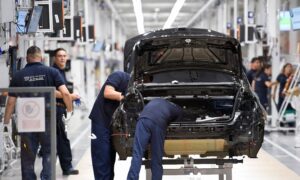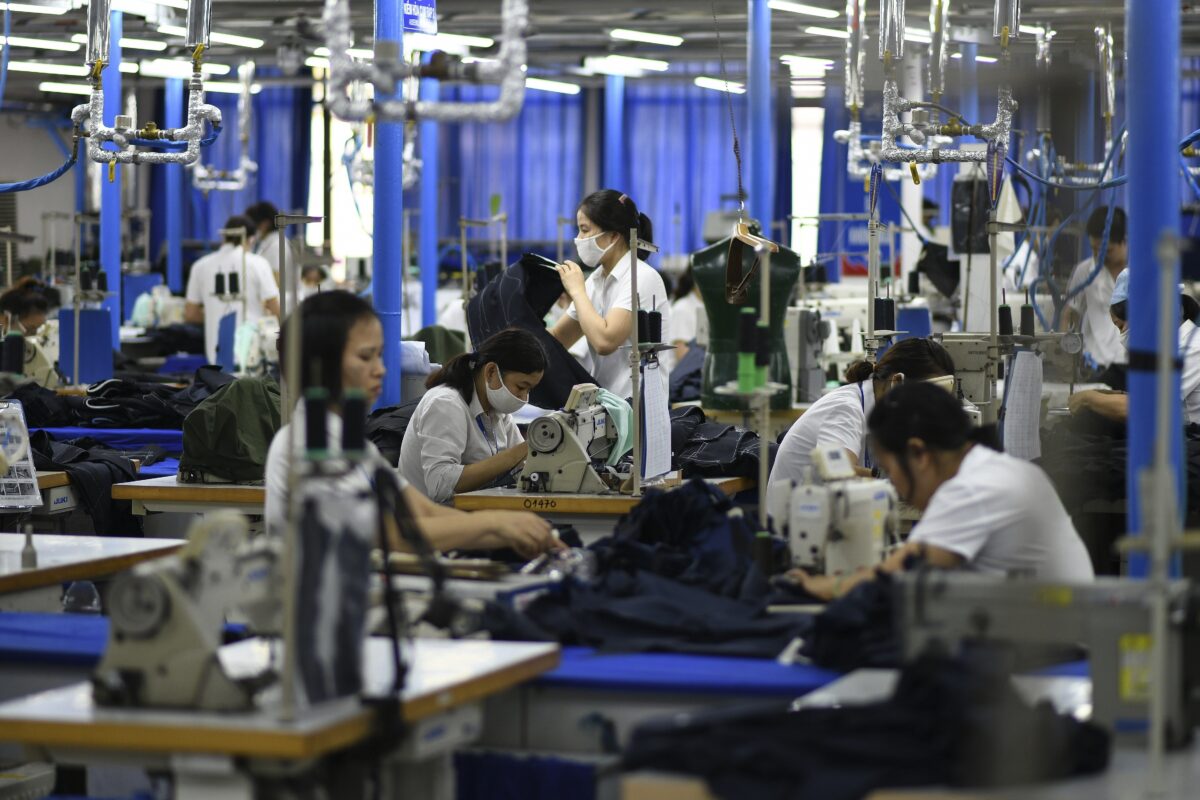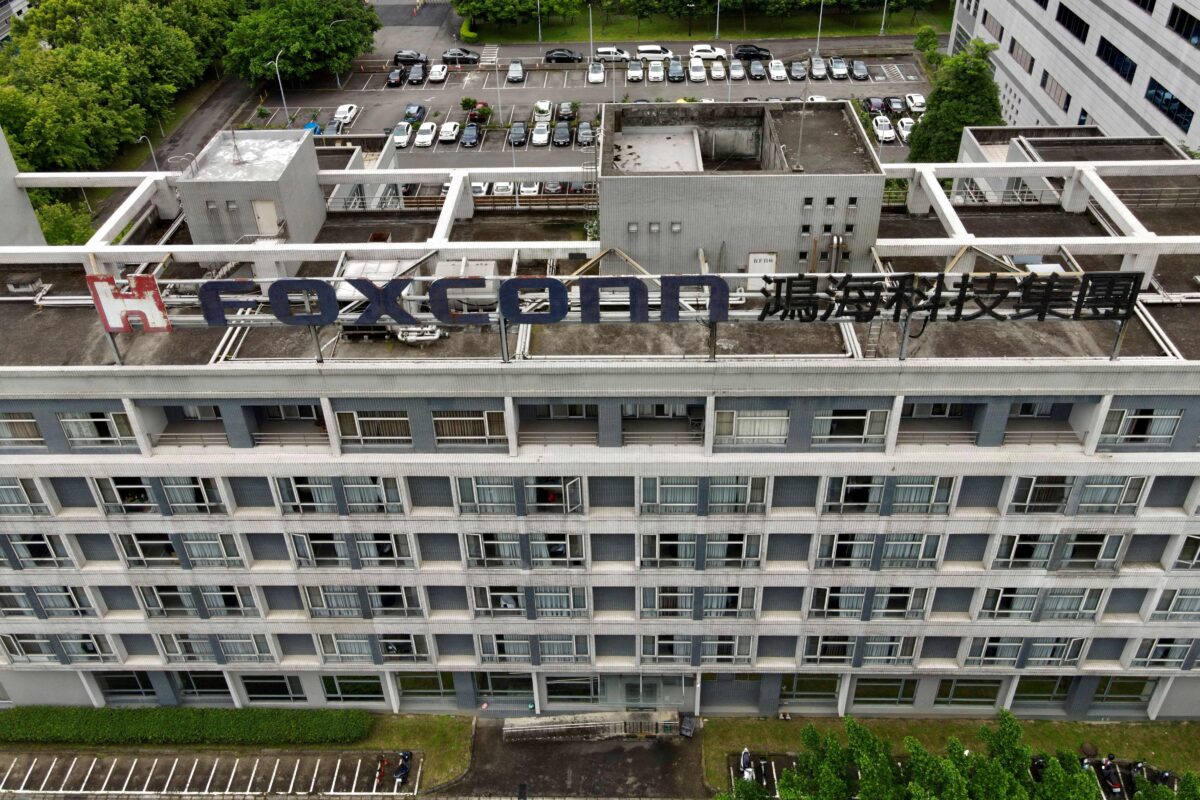Can Any of These Countries Replace China as the Factory of the World?
CommentaryChina is losing its influence; it’s in decline. At the same time, however, China, ruled by a despotic regime, is responsible for 28.7 percent of global manufacturing output (more than 10 percentage points ahead of its No. 1 rival, the United States). This utter dependence on China for manufacturing must be stopped. As I write this, three countries are working to siphon customers away from China. Will their efforts prove to be successful? I speak from experience when I say the following: communist China is not a fun place to live in. Moreover, with its frequent power cuts and the Chinese Communist Party’s (CCP) obsession with “zero -COVID” policies, it’s not a fun place to do business in, either. Such an obsession with eradicating a borderline-endemic disease is not conducive to a healthy society; in fact, it borders on the pathological. The CCP’s utter blindness is not lost on major companies like Apple, Google, and Samsung. The three tech giants are moving more of their operations to Vietnam, home to the fastest-growing economy in Asia and one of the fastest-growing economies in the world. Garment factory workers are making men’s suits in a factory in Hanoi, Vietnam, on May 24, 2019. (Manan Vatsyayana/AFP via Getty Images) Vietnam seems to offer a considerably more favorable environment to big businesses fed up with China’s constant lockdowns and production disruptions. As the author Govi Snell recently reported, due to its cheap labor and close proximity to China, Vietnam is attracting an increasing number of renowned businesses. Greg Poling, director of the Southeast Asia program at the Center for Strategic and International Studies (CSIS), told Snell that many of these businesses no longer see a future in China. Between the trade war with the United States, rising labor costs, and the complete failure of supply chains during COVID, said Poling, the CCP’s “zero-COVID” policy should be viewed as the straw that broke the camel’s back. China’s loss is Vietnam’s gain. Take Foxconn, for example, a Taiwan-headquartered manufacturer of smartphones for Apple. The company recently signed a $300 million contract with Kinh Bac City, a Vietnamese corporation, to expand its facility in Hanoi, a city located in the north of the country. The move could prove to be monumental, considering Foxconn—a company that has done so much of its business in China—is exploring the possibility of entering the world of semiconductor manufacturing. Apple recently announced plans to shift more of its production away from China and into India. Interestingly, Foxconn is currently manufacturing Apple’s latest phone, the iPhone14, at its factory in Chennai, located in eastern India. Like Vietnam, India is home to a rapidly-expanding economy. Set to become the most populated country in the world very soon, India has aspirations of becoming a worldwide manufacturing hub by the end of the decade. Such aspirations appear to be rooted in reality. Last year, India ranked second in the Global Manufacturing Index, leapfrogging the United States. A Foxconn logo on a building in Tucheng District, New Taipei City, Taiwan, on May 6, 2022. (Sam Yeh/AFP via Getty Images) Another country with dreams of becoming a manufacturing hub of genuine significance is Mexico. In July, the author Jeremy Bliss asked, somewhat rhetorically, why Mexico? He then laid out several reasons why companies, especially those based in the United States, should seriously consider moving their operations to Mexico. In addition to its “optimal location along the US’s southern border,” he wrote, Mexico offers “convenient access to North America, as well as Atlantic and Pacific trade routes.” Indeed, it does. Moreover, when comparing Mexico’s cost of labor and transportation fees with other manufacturing hubs, the North American nation offers a very favorable environment. For these reasons, noted Bliss, “Mexico can connect businesses to more than one billion consumers and 60% of the world’s GDP.” This explains why so many companies—including BMW, Nissan, Honda, Audi, Daimler, Mazda, and Toyota—have moved a large portion of their operations to Mexico or are building new assembly plants there. You undoubtedly noticed that all seven of these companies are foreign automakers. They are attracted to Mexico because of the country’s highly-skilled workforce, low energy costs, and free-trade agreements. The IMMEX program, which was signed into effect in 2006, allows foreign companies to conduct full operations in Mexico with low-tax structures and significantly reduced labor costs. This brings us back to the title of this short piece, can any of these countries replace China as the world’s factory? To many, the question seems utterly ridiculous. But it really shouldn’t. If enough companies turn away from China and direct their business elsewhere, the world can gradually become less reliant on China. This won’t be easy and will take some time—but it can be done. View

Commentary
China is losing its influence; it’s in decline. At the same time, however, China, ruled by a despotic regime, is responsible for 28.7 percent of global manufacturing output (more than 10 percentage points ahead of its No. 1 rival, the United States). This utter dependence on China for manufacturing must be stopped. As I write this, three countries are working to siphon customers away from China. Will their efforts prove to be successful?
I speak from experience when I say the following: communist China is not a fun place to live in. Moreover, with its frequent power cuts and the Chinese Communist Party’s (CCP) obsession with “zero -COVID” policies, it’s not a fun place to do business in, either. Such an obsession with eradicating a borderline-endemic disease is not conducive to a healthy society; in fact, it borders on the pathological.
The CCP’s utter blindness is not lost on major companies like Apple, Google, and Samsung. The three tech giants are moving more of their operations to Vietnam, home to the fastest-growing economy in Asia and one of the fastest-growing economies in the world.

Vietnam seems to offer a considerably more favorable environment to big businesses fed up with China’s constant lockdowns and production disruptions.
As the author Govi Snell recently reported, due to its cheap labor and close proximity to China, Vietnam is attracting an increasing number of renowned businesses. Greg Poling, director of the Southeast Asia program at the Center for Strategic and International Studies (CSIS), told Snell that many of these businesses no longer see a future in China. Between the trade war with the United States, rising labor costs, and the complete failure of supply chains during COVID, said Poling, the CCP’s “zero-COVID” policy should be viewed as the straw that broke the camel’s back.
China’s loss is Vietnam’s gain. Take Foxconn, for example, a Taiwan-headquartered manufacturer of smartphones for Apple. The company recently signed a $300 million contract with Kinh Bac City, a Vietnamese corporation, to expand its facility in Hanoi, a city located in the north of the country.
The move could prove to be monumental, considering Foxconn—a company that has done so much of its business in China—is exploring the possibility of entering the world of semiconductor manufacturing.
Apple recently announced plans to shift more of its production away from China and into India. Interestingly, Foxconn is currently manufacturing Apple’s latest phone, the iPhone14, at its factory in Chennai, located in eastern India. Like Vietnam, India is home to a rapidly-expanding economy. Set to become the most populated country in the world very soon, India has aspirations of becoming a worldwide manufacturing hub by the end of the decade. Such aspirations appear to be rooted in reality. Last year, India ranked second in the Global Manufacturing Index, leapfrogging the United States.

Another country with dreams of becoming a manufacturing hub of genuine significance is Mexico. In July, the author Jeremy Bliss asked, somewhat rhetorically, why Mexico? He then laid out several reasons why companies, especially those based in the United States, should seriously consider moving their operations to Mexico.
In addition to its “optimal location along the US’s southern border,” he wrote, Mexico offers “convenient access to North America, as well as Atlantic and Pacific trade routes.” Indeed, it does. Moreover, when comparing Mexico’s cost of labor and transportation fees with other manufacturing hubs, the North American nation offers a very favorable environment. For these reasons, noted Bliss, “Mexico can connect businesses to more than one billion consumers and 60% of the world’s GDP.” This explains why so many companies—including BMW, Nissan, Honda, Audi, Daimler, Mazda, and Toyota—have moved a large portion of their operations to Mexico or are building new assembly plants there.
You undoubtedly noticed that all seven of these companies are foreign automakers. They are attracted to Mexico because of the country’s highly-skilled workforce, low energy costs, and free-trade agreements. The IMMEX program, which was signed into effect in 2006, allows foreign companies to conduct full operations in Mexico with low-tax structures and significantly reduced labor costs.
This brings us back to the title of this short piece, can any of these countries replace China as the world’s factory? To many, the question seems utterly ridiculous. But it really shouldn’t. If enough companies turn away from China and direct their business elsewhere, the world can gradually become less reliant on China. This won’t be easy and will take some time—but it can be done.
Views expressed in this article are the opinions of the author and do not necessarily reflect the views of The Epoch Times.












